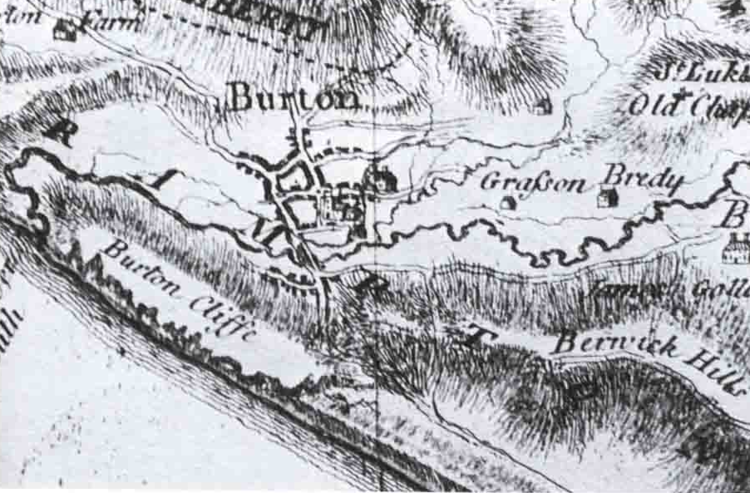The story of the farm
…stretches back to the Domesday Book and beyond. Our entry in the book says that back then there was one villager, eight smallholders and two slaves, all looking after 15 cattle, seven pigs and 25 sheep. Our Tenant-in-Chief at the time was the wonderful sounding Hugh, son of Grip’s wife Hawise.
Back then the farm was part of a small settlement known as Graston Village. The word Graston is thought to come from Grey and Stone, which makes sense if you try digging beneath the soil or take look at the walls of all the old buildings on the farm.

In 1086 we were home to two slaves and the son of Grip.
In later years Graston was farmed by the monks from nearby Abbotsbury. They built a complex system of drainage channels to allow flood irrigation from the River Bride, which runs through the farm. The monks also farmed swans for their food, and while that practice has – like slavery on Graston Farm – long died out, there’s still a Swannery at Abbotsbury. It is said to be the only place in the world where you are able to walk through a colony of nesting Mute swans.
In 1545, according to CJ Bailey in his book The Bride Valley, Graston was “granted by Henry VIII to none other than John Russell, the Berwick farmer’s son who was now Lord Russell, Comptroller of the King’s Household and second only in seniority to the Treasurer.” Bailey writes that over the following centuries ownership passed through a succession of tenants and later owners, until in the 18th century Graston was bought by the Strodes of Parnham. And then,100 years later, it belonged, together with its neighbour Bredy, to the Hussey family.
Throughout this time and ever since, the number of people working the land slowly decreased. In the Middle Ages there were 10 farms working around Burton Bradstock, each with its own herd of cattle. Today there are just three of us. Together without our guests, we work to keep Graston’s ancient connection to this land alive.

Graston can be seen marked to the right of Burton in this map from 1765
